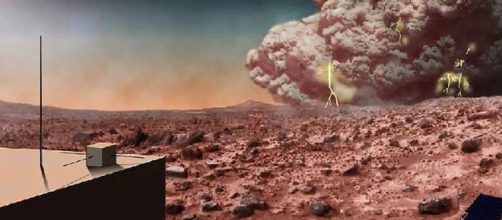Space scientists at NASA reveal that they see Dust Storms on the surface of Mars. Last week, scientists were surprised to witness dust storm on a distant planet. NASA's Mars Reconnaissance Orbiter (MRO) shows that storms generate in the Acidalia area of northern Mars. They move to the southern hemisphere, and expand in size. Experts claim that the size of dust storms is bigger than the United States, and their frequency is unknown.
Unexpectedly high frequency
Richard Zurek at NASA's Jet Propulsion Laboratory says that dust storms have unexpectedly high frequency.
Scientists will reveal the path and characteristics of the storms. For now, Zurek says that these originate from the northern hemisphere, and move to the southern hemisphere. He aims to understand the weather of Mars after studying the properties of dust particles. One mystery is the scale of a dust storm. Richard says that there are multiple storms, and all have different sizes and frequencies. Some of the storms are smaller than our Moon, while others are bigger than the Sun. A few dust storms are the size of the United States, and appear on the surface of Mars throughout the day.
The appearance and existence of storms
Zurek says that global dust storms happen during summer. These days, Mars is closest to our Sun, and has moderate temperature.
Its orbit tends to change every 110,000 years. Previously, Mars’ elliptical orbit exposed some of its parts to maximum heating, but now the dust is being generated because the surface of the planet is dry. Only a small portion of dust particles lifts high in the atmosphere. And sometimes, large bits of dust hop along the surface and dislodge finer materials that float up.
Global dust storms are very common, and experts at NASA will study the properties of Mars’ storms in the upcoming months. Richard says that he will conduct research to explain how Martian dust particles dominate the lower atmosphere. He will also find out the original sources of the dust storms. Researchers suggest that most of the storms originate from an interplanetary source. However, Richard requires some time to prove this point.

